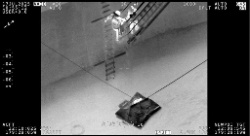Speech to the New Zealand Defence Industry Association
Hon Gerry Brownlee
Minister of Defence
16 November 2016
Speech to the New Zealand Defence
Industry Association – Viaduct Events Centre, Auckland
Thank you to the Defence Industry Association for inviting me to open the Forum with this speech.
This is my first time attending the Forum, and I can see from the programme that you have an excellent two days of meetings and discussion ahead of you.
The Government released its second Defence White Paper in June.
So it is worth briefly reflecting on the New Zealand’s defence policy and the environment that has helped shape it.
New Zealand exists in an increasingly uncertain and unstable international environment.
While we do not face a direct military threat in the foreseeable future, the rules based international order which New Zealand relies upon as a small country is under greater pressure.
There are increasing tensions in the Asia Pacific, an area where stability is critical for New Zealand’s economic security.
Our partners in the South Pacific continue to face a range of economic, governance, and environmental challenges.
Activity in New Zealand’s maritime domain is increasing, including in Antarctica and the Southern Ocean, and incidents requiring a New Zealand response are becoming more likely to occur.
New Zealand is not immune to the impact of radical terrorist groups such as Daesh, which has extended their global reach and influence, or to the threats in cyberspace that have increased markedly in the past five years.
We therefore needs a Defence Force that can protect New Zealand and also contribute to international security.
This means being able to maintain awareness and respond to activities in New Zealand’s Exclusive Economic Zone, supporting our interests in Antarctica and the Southern Ocean, contributing to disaster response efforts at home and in the South Pacific, and participating in international coalition deployments.
It also means protecting Defence Force networks from increasingly sophisticated cyber threats.
As a result of the Government’s assessment of New Zealand’s strategic outlook in the Defence White Paper, significant new capability investments will be made in five critical areas:
Antarctic and Southern Ocean Operations, responding to the increased international interest in Antarctica and Southern Ocean fisheries.
Air Surveillance, responding to the increase in demand for air surveillance over our maritime domain, and during multinational missions further afield.
Littoral Operations, to increase the range of operations the Defence Force can undertake independently.
Cyber Protection and Support, to respond to the evolving cyber threat facing all nations.
Intelligence Support, to better analyse data and information to improve Defence Force awareness of our exclusive economic zone, as well as support operations overseas.
Today it is my pleasure to launch the Defence Capability Plan 2016, the third and most detailed edition of the Plan released by this Government.
The Defence Capability Plan provides the detail of the investments in capability required to deliver on the Defence White Paper.
It is the primary vehicle for the Government to communicate its priorities to the public, to industry, and to international partners.
The Plan outlines a $20 billion programme of capital investment, over a fifteen year period, including $1.7 billion to modernise the Defence Estate, while retaining a presence in all current camps and bases.
To support this investment, the Government has planned annual increases in the Defence Force operating and capital budgets, which will maintain Defence spending at an average of around 1% of Gross Domestic Product out to 2030.
These increases are already underway, with $300 million of additional operating spending allocated over the next four financial years as part of Budget 2016.
The Defence White Paper expressed the Government’s commitment to release Defence Capability Plans more tailored to industry needs.
As part of this commitment, the 2016 Plan outlines the relative scale of the investments by placing each of them within bands for capital cost and also includes a timeline for major decisions.
Providing this information to defence industry will allow suppliers to better phase their approaches to Defence when suggesting capability solutions.
For New Zealand suppliers, knowing the size and scope of capability investment opens up opportunities for partnering with large overseas contractors to provide ongoing support to major assets, or to suggest niche technology solutions to emerging challenges.
I believe it also builds confidence with the New Zealand public and our international partners, by indicating how this very significant amount of taxpayer money may be spent.
The Capability Plan is not just a list of projects.
For the first time, the Plan details how capability investments will contribute to the operational capacity of the Defence Force.
This includes how forces are recruited, trained, and prepare for operations, and what operations the Government expects the Defence Force to carry out.
The Plan explains how the development of capability is supported by investments across the enabling functions of Estate, logistics, and information technology.
Of course, no capability can be raised, trained and deployed without the excellent men and women who serve in the Defence Force, who keep our country secure and protect our values and way of life.
I mentioned earlier the challenges all nations are facing in cyberspace.
I see this as the most significant shift in the nature of defence over the last five years.
The Defence Force possesses unique platforms and networked systems that must be able to operate securely under a cyber threat.
Information contained in these systems must remain secure.
As the Defence Force’s platforms and networks are frequently deployed abroad, a similarly deployable cyber security and support capability is required to enable operations.
Capital investment into this capability, such as the procurement of software, will take place on an annual basis out to 2030, to keep pace with technology.
Separate to the capital investment in cyber security described in the Plan, personnel will be recruited to keep Defence networks free from cyber intrusion, and to protect Defence personnel and assets from cyber attack when overseas.
The improvement of secure strategic communications capabilities has been prioritised to ensure deployed personnel are better supported, and able to manage the large amount of data typical of the modern battlefield.
I will now briefly draw your attention to some of the most significant investments the Government has planned out to 2030.
The Royal New Zealand Navy 75th Anniversary celebrations this week demonstrate to New Zealand and the world the importance of maritime capabilities, and how much we value our sailors.
The premier combat capability of the Royal New Zealand Navy is the frigate force.
The current ANZAC frigates are being upgraded over the next four years to maintain the ships’ ability to defend against current and forecast threats.
The Government is also committed to replacing the frigates with modern combat vessels relevant to the prevailing strategic environment in the late 2020s and early 2030s.
This decision is likely to be the most significant and challenging capability choice facing future Governments in the next 15 years, with initial consideration of options taking place before 2020.
Reflecting the need to increase the New Zealand presence in the Southern Ocean, the fleet of Offshore Patrol Vessels will be increased from two vessels to three, with the new vessel being ice-strengthened and winterised.
As well as increasing New Zealand’s capacity for sub-Antarctic operations, the new vessel will free up other vessels for operations in the South Pacific.
HMNZS Endeavour, the Navy’s fleet tanker, purchased in the 1980s, will soon reach the end of its life.
As you will be aware, a Maritime Sustainment Capability contract has been signed with Hyundai Heavy Industries to build a contemporary tanker for New Zealand.
The new capability will be ice-strengthened, enabling the vessel to supply fuel and other goods to Antarctica in the summer months, once an ice-breaker has cleared a channel through the ice.
The Littoral Operations Support Capability project, currently out for tender, will deliver a new vessel to the Navy in the early 2020s.
The White Paper process enhanced the planned vessel, which will support the Navy dive, hydrographic and mine counter measure teams, and will increase the range of operations the Defence Force can undertake independently in the South Pacific.
To support our land operations, a range of projects are planned to ensure that the Army personnel is equipped with up-to-date and effective technology, weapons and equipment.
The Network Enabled Army programme will digitise the Army by providing modern command, communication, battle management and surveillance capabilities, such as a common operating picture of troop movements.
This is an exciting time for our soldiers, with new weapons being integrated into the force.
Most prominently, the new Lewis Machine and Tools Modular Assault Rifle is being rolled out to units, with new recruits training on the rifle next year.
To ensure our soldiers have the up-to-date tools required for modern operations, we will constantly be refreshing the stocks.
An example of this is the rolling purchase of night vision equipment out to 2030.
Significant investments are planned in the protection of our soldiers on operations, including technology to counter the growing threat of improvised explosive devices.
To ensure the Army has the right a mix of mobility, armoured protection and directed firepower on operations, a project will consider how the Pinzgauer and NZLAV vehicles might be replaced, modernised or integrated with other forms of protected mobility.
This could include the procurement of a range of vehicle types.
Significant investment is planned to ensure that the New Zealand Special Air Service remains the world class and cutting edge fighting force it is today.
The new Battle Training Facility has been built in Auckland, and new special operations vehicles are being procured.
New specialised weapons and equipment will be purchased for special operations forces on a rolling basis, to ensure the combat advantage is maintained.
In the air domain, new investments are planned for our fixed wing aircraft fleets.
The upgrade of the mission systems on-board the P-3 Orion fleet is complete, and a contract has been signed with Boeing to upgrade their underwater intelligence, surveillance and reconnaissance technology to better detect and deter underwater threats.
The life extension programme for the C-130 Hercules is nearing completion, with the fifth and final aircraft to be upgraded by the end of the year.
The programme has ensured the Hercules can continue to operate until the early 2020s.
The C-130 Hercules, P-3 Orion and Boeing 757 fleets will all reach the end of their operational lives over the period of the Plan.
The Future Air Surveillance Capability project will ensure the Defence Force retains an airborne intelligence, surveillance, reconnaissance and response capability to replace the P-3 Orion when it retires.
The Future Air Mobility Capability project will deliver new aircraft to the Air Force in the early to mid-2020s to replace the C-130 and B757 fleets.
This will include a tactical airlift capability able to move personnel and cargo within the South Pacific, to Antarctica, and in support of coalition operations further afield, and a strategic airlift capability for sustaining global deployments.
No capability is more important than people.
Alongside purchases of new military equipment, a sustainable workforce will be recruited and trained, matched to the planned investment in capabilities.
To meet this demand, the Defence Force must attract and retain a committed, diverse workforce with sophisticated skills in demand across the wider labour market.
To achieve this, Defence is committed to lifting its workforce management performance, and is investing in systems to support its people, as the key enabler for capability.
The Government will invest in a significant regeneration of the Defence Estate, with $1.7 billion in capital spending, and $2.5 billion in operating spending earmarked out to 2030.
The Defence Estate Regeneration Programme will deliver modern, high-quality assets, able to support future capability.
The Defence Force presence will be maintained at all current camps, bases and training areas.
This area of investment is one of the greatest opportunities for New Zealand industry to be involved, through tendering for maintenance spending planned across the period, and the significant building projects that will take place.
Defence will partner with local providers to build and run assets.
Design, construction and maintenance of projects will be outsourced to industry wherever possible.
On the topic of partnership, at this Forum you will hear about Defence’s new Industry Engagement Strategy.
This is an important step to boosting what is already a strong and productive relationship to the benefit of both the Government, local and international defence industry.
Important initiatives are underway as part of this strategy, including the development of an early engagement framework, improved transparency, and ease of business for suppliers.
And of course we always want to hear from you about how we can make things better. Maintaining and enhancing the commitment, understanding and trust between Defence and industry will ensure we have a strong, prepared and sustainable Defence Force fit for the future.
Defence will lift its game to deliver on the capability commitments made in the Defence White Paper, and in this Plan.
Defence must continually manage its affordability, and demonstrate value for money to the taxpayer.
Maintaining the confidence of Ministers, industry and the public will be critical over the next 15 years as Defence delivers the Government’s $20 billion programme of capital investment.
The Government’s long term capability investment underlines our commitment to the security of New Zealand, and to making real contributions to a stable and peaceful international order.
Crucially, this approach will only be truly successful if it is done in partnership with the both the local and international suppliers.
We see that partnership as vital for the high quality, reliable equipment our uniformed men and women need.
Can I extend my congratulations to the nominees for the Minister of Defence Awards of Excellence to Industry.
You exemplify the type of partnerships we are seeking to build and enhance.
Thank you again to Bernie and the Defence Industry Association.
All the best for the next two days, and enjoy the Awards Dinner tomorrow night.
ends


 Gordon Campbell: On The Costs Of Regulating Cost, And Burkina Faso As A Role Model
Gordon Campbell: On The Costs Of Regulating Cost, And Burkina Faso As A Role Model Dog Lovers of Monte Cecilia: Locals Challenge Puketāpapa Local Board And Auckland Council’s On-Leash Policy Change For Monte Cecilia Park
Dog Lovers of Monte Cecilia: Locals Challenge Puketāpapa Local Board And Auckland Council’s On-Leash Policy Change For Monte Cecilia Park Maritime New Zealand: Three Rescued In High-Seas Operation After Vessel Abandoned North Of New Zealand
Maritime New Zealand: Three Rescued In High-Seas Operation After Vessel Abandoned North Of New Zealand Health Coalition Aotearoa: Experts Urge Fix As Government Expands Failing Lunch Scheme To Primary Schools
Health Coalition Aotearoa: Experts Urge Fix As Government Expands Failing Lunch Scheme To Primary Schools Helen Clark Foundation: The Helen Clark Foundation Launches Honorary Fellow Programme
Helen Clark Foundation: The Helen Clark Foundation Launches Honorary Fellow Programme Department of Conservation: Call For Public Information On Auckland Marine Mammal Cases
Department of Conservation: Call For Public Information On Auckland Marine Mammal Cases New Zealand Jewish Council: NZ Jewish Council Clarifies Position - Advocating For Safety And Accountability, Not Censorship
New Zealand Jewish Council: NZ Jewish Council Clarifies Position - Advocating For Safety And Accountability, Not Censorship


